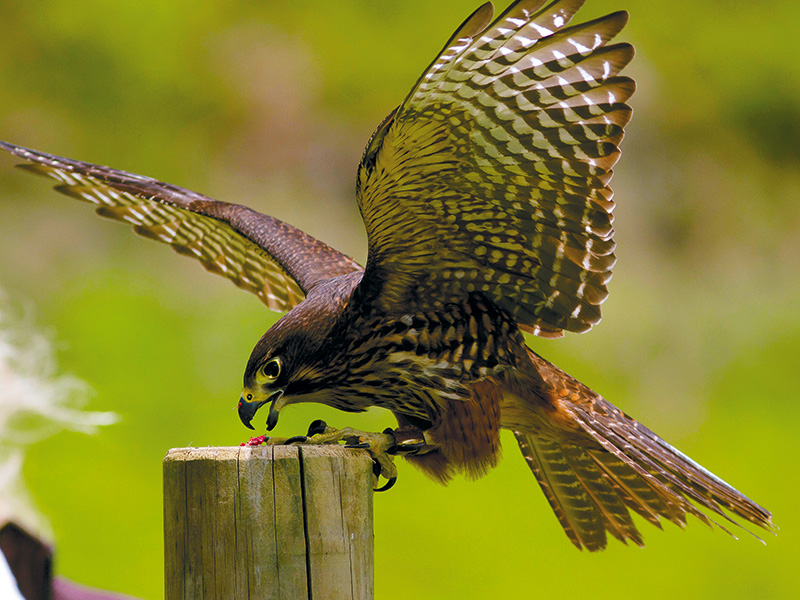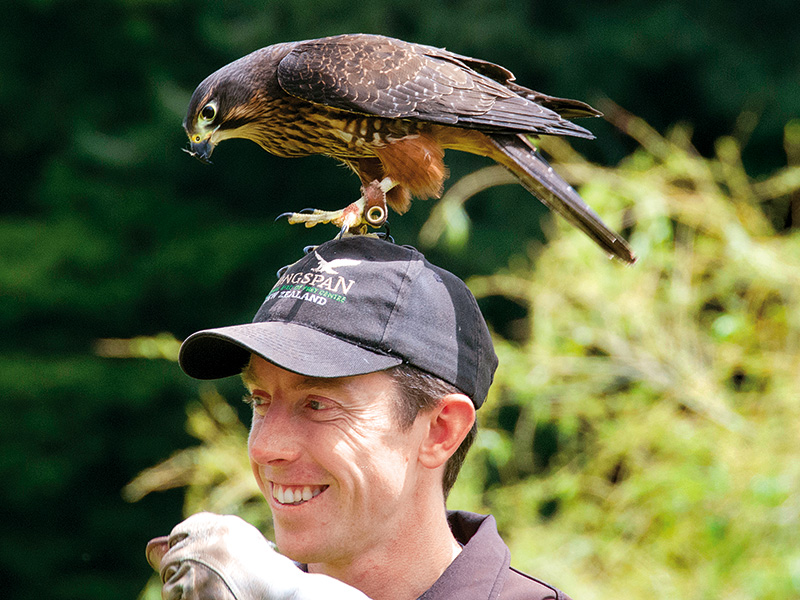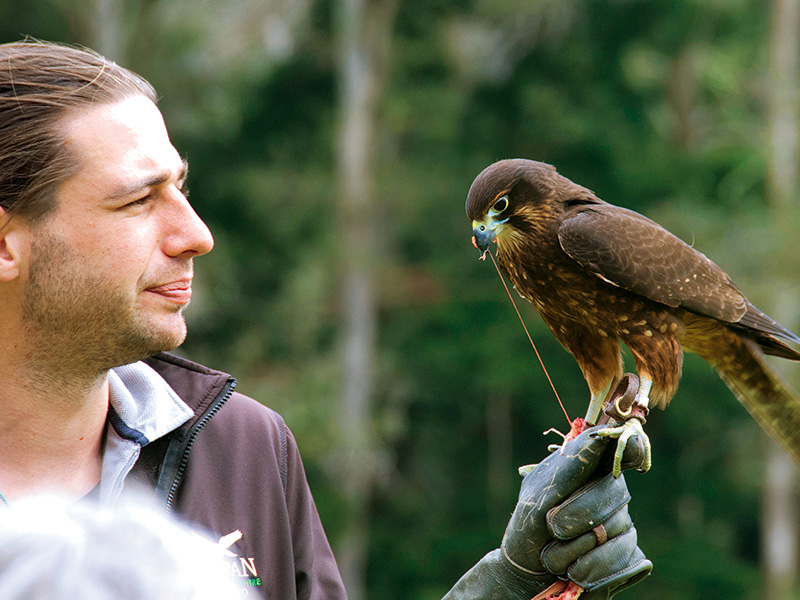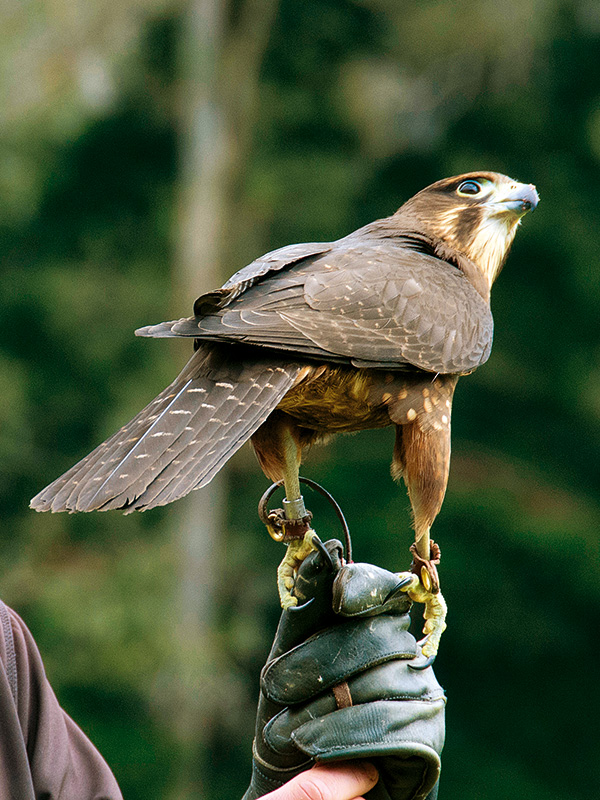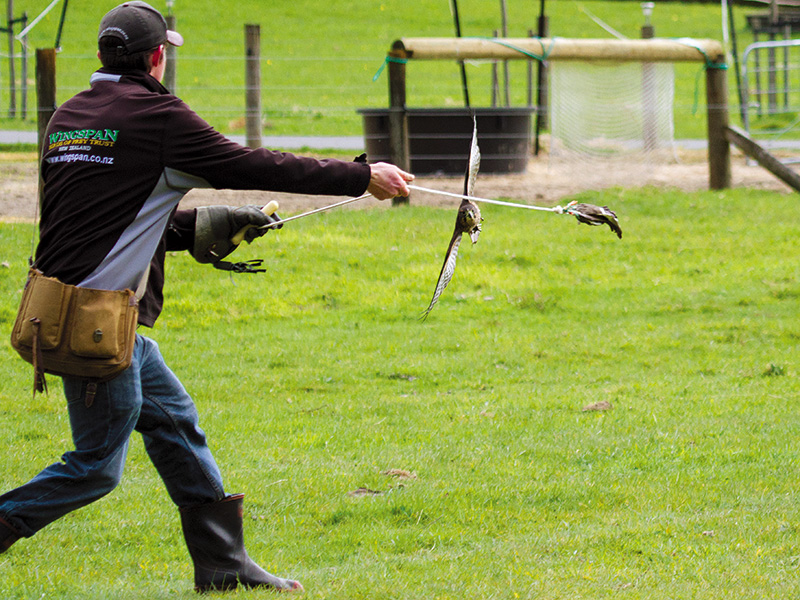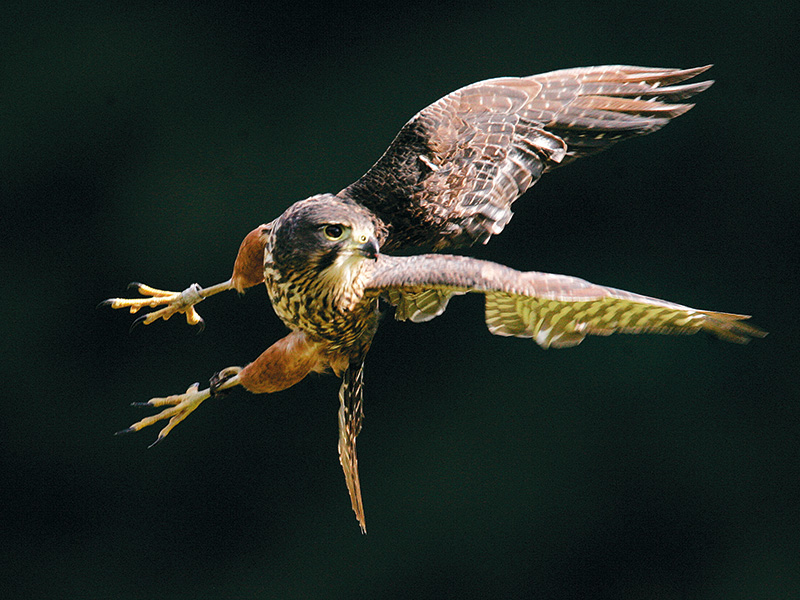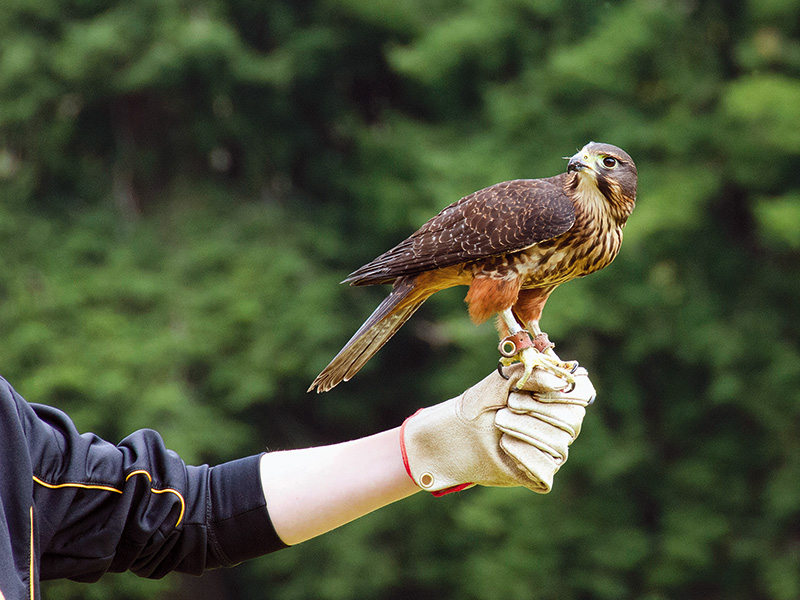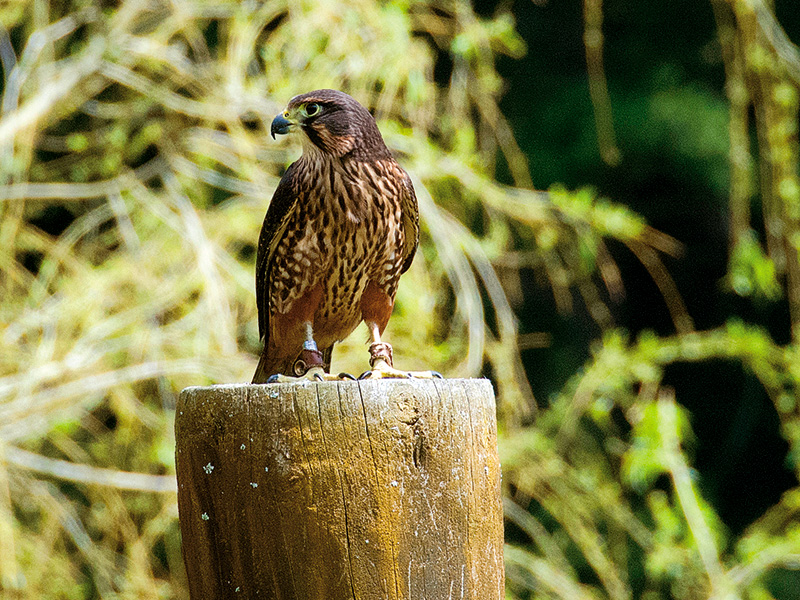Atareta launched from her perch and seemed to slide though the air before landing precisely on the outstretched gauntlet of her trainer. With surprising gentleness for such murderous talons, she clamped herself in place, glared at the gathered audience and then began to tear at the morsel that had lured her down – two little mouse legs that protruded from the side of the glove.
Atareta is a karearea, or New Zealand falcon, a species of raptor that is known world-wide for its warrior attitude in the fierce defence of territory. She looked placid enough as she demolished the rodent's limbs with her small, hooked, sharply-pointed beak, but she had the look: "Keep your distance mate. You've got the goods but don't think we'll ever be close."
This falcon is one of the star performers at Wingspan just out of Rotorua on Paradise Valley Road. In unadorned sheds that are set in a deep valley enclosed by cliffs and pine trees, the centre runs one of the world's successful bird-of-prey conservation programmes. There are just four full-time staff but many volunteers.
If it were not for Wingspan these unique birds, endemic New Zealand, would be very close to extinction. They have been so victimised and undervalued that there is only an estimated 10,000 left in the wild. Tragically they are still being shot at the rate of 150 a year.
Adult raptors – falcons, harriers and moreporks – end up at the park because of injury, illness or the destruction of their habitat. Some of those can be healed and returned to the wild. Those reared in captivity from eggs must go through a long training process to learn to survive on their own.
There are two trainers at the park. Andrew Thomas was currently training Atareta and Dave Crimp has been training a young girl called Bindy for the last year. She's ten-months old and was rescued as an egg and hand reared.
Dave demonstrated the age-old falconry techniques that are being used to up-skill her. He twirled a long whip with bait attached. Bindy dived, caught the bait in her long talons and pinned it to the ground to devour.
At Wingspan National Bird of Prey Centre there are other unfortunate birds that could not survive if released and some of these end up in Wingspan's breeding programme. In a long shed we peered through the wire at Whisper the morepork who was fussing around her foster chick. Fovea is a falcon, an orphan with with a damaged eye, who is now a successful breeder. A barn owl called Tahi was found with an injured wing and has become the only one of its kind in captivity in New Zealand.
In the Wingspan aviary we introduced ourselves to Frodo, who is small morepork, and Nestor who was found floating in the Tongariro River by a kayaker. Then there were the harriers – Fran, Sky and Jack who were brought to the centre because they were ill or injured.
But of all the birds in the aviary it was a girl called Millie that I kept going back to. She is a very fine falcon who was rescued as an egg, hatched and hand reared at the centre. As I watched her she would occasionally turn her head and with piercing eyes and in an attitude of distain, return my gaze. I think fell in love with her although clearly my affection was not reciprocated.
New Zealand falcons are awe-inspiring birds and deserve all the admiration and protection we can offer. May they be spared.
See the full article in the latest issue of Motorhomes Caravans & Destinations magazine. Subscribe here.

The road to Milford Sound
Explore the awe-inspiring journey to Milford Sound through Fiordland National Park – from scenic DOC campsites and iconic hikes to wildlife cruises and luxury stays

